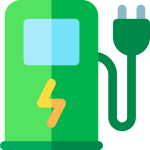
Electric vehicles priced under $40,000 are no longer a niche choice for early adopters. In 2025, mainstream brands and new entrants have brought sized-back but genuinely usable electric cars to Australian buyers who prioritise affordability, low running costs and modern features. With petrol prices remaining volatile and state-level incentives still easing purchase costs in some jurisdictions, sub-$40K EVs are a realistic proposition for many households – particularly city commuters and small-family drivers.
What you can expect from a new EV under $40K in 2025
The budget EV segment has matured. Buyers can now expect a package that balances real-world range, reasonable charging performance and contemporary safety and convenience equipment:
- Range: Most new-entry EVs deliver between about 250 km and 350 km (WLTP) – ample for daily commuting, school runs and weekend errands.
- Charging: Lithium-ion battery packs and AC home charging mean overnight top-ups are the most convenient routine. Public DC fast charging is increasingly available and will usually take these cars to around 80% in 30-50 minutes depending on the vehicle’s maximum DC rate.
- Tech and safety: Touchscreen infotainment with Apple CarPlay/Android Auto, reversing cameras, autonomous emergency braking and lane-keeping aids are common even at lower price points.
- Warranty and battery cover: Manufacturer warranties typically cover the vehicle for 5-7 years with separate battery warranties often extending to around 8 years or a set number of kilometres.
- Running costs: Electricity costs per kilometre are generally lower than petrol, and EVs have fewer scheduled maintenance items – brakes, oil and timing-belt-type services are reduced or eliminated.
Top 4 new EVs in Australia you can buy for under $40,000 (September 2025)
Below are four of the most competitive new electric cars available to Australian buyers in 2025 that retail for less than $40K drive-away. Prices and ranges are manufacturer-advertised WLTP figures and drive-away pricing where specified; always confirm the latest on-road pricing with dealers.
BYD Dolphin Essential
- Typical drive-away price: from about $31,000
- Range: up to c. 340 km (WLTP)
- Why it stands out: The Dolphin is one of the most affordable new EVs in Australia while delivering a practical package for urban drivers. Its compact footprint, efficient powertrain and relatively generous range make it a strong contender as a first EV or second family car.
- GWM Ora Standard Range
- Typical drive-away price: from about $34,000
- Range: up to c. 310 km (WLTP)
- Why it stands out: The Ora mixes retro-inspired styling with a surprisingly spacious interior and a long features list for the price. It is positioned as a value-packed compact hatch, with safety technology and comfort equipment that appeal to cost-conscious buyers.
MG4 Excite 51
- Typical drive-away price: from about $38,000
- Range: up to c. 350 km (WLTP) for some variants
- Why it stands out: The MG4 combines strong real-world range with a well-balanced driving experience, a competitive warranty and a solid ANCAP safety performance in many variants. It’s an appealing option if you want a more driver-focused compact hatch without paying a premium.
Hyundai (entry-level compact EV)
- Typical drive-away price: around $39,000 plus on-road costs (model and naming may vary)
- Range: around 320-330 km (WLTP) for smaller-capacity variants
- Why it stands out: Hyundai’s compact EV offerings deliver contemporary cabin technology, strong dealer supporting networks and the brand’s reputation for reliability and warranty cover. For buyers wanting broad aftersales support, this positioning is attractive.
A few notes on choosing between these models
- Real-world range will differ with speed, temperature, load, and use of climate control. Budget EVs typically show their best economy in suburban and mixed-use driving.
- Charging speeds vary. Many cars in this price bracket accept DC fast charging but often at modest peak rates (e.g., 50-100 kW), which means longer fast-charge sessions than premium models.
- Consider total cost of ownership (TCO) not just sticker price: insurance, electricity costs, maintenance and any available incentives materially affect affordability.
Charging in Australia: practical tips for budget EV owners
- Home charging is the most economical option. A dedicated single-phase home wallbox (commonly 7 kW) will add roughly 30-50 km of range per hour, enough for typical daily use.
- Public DC fast chargers are expanding across highways and metropolitan areas. For longer trips, plan stops where higher-power chargers are available; some network operators show live charger status in their apps.
- Charging costs depend on tariff plans and public charger pricing. Off-peak home tariffs can cut running costs substantially.
- If you’re in a rental apartment, explore workplace charging, local council programs or negotiations with building managers about shared wallbox installations.
Incentives and rebates: what to check before you buy
State and territory incentives continue to change and often apply only to certain vehicle price brackets or emissions standards. Examples that have been available previously include stamp duty concessions, registration discounts and direct rebates. These programs are subject to eligibility criteria, phase-outs and regular reviews. Always verify current incentives on official state government websites or through your dealer before finalising a purchase, as incentives can materially reduce the upfront cost.
Practical financing and ownership considerations
- Finance: Many lenders offer EV-specific products – compare interest rates and balloon/term structures, and ask about residual values and warranties.
- Trade-ins and used EV values: As the market matures, used EV values are becoming more stable, but vary by model, battery health and warranty status.
- Servicing: Trusted dealer networks and branded service centres remain important for warranty compliance, but independent EV workshops are becoming more common.
Conclusion
By 2025, the sub-$40,000 electric car category in Australia has evolved into a genuine market segment offering practical, well-equipped vehicles for mainstream buyers. If your driving is largely urban or regional, and you have access to home or workplace charging, these models can deliver lower operating costs, modern safety and convenience features, and sufficient range for day-to-day needs. The right choice depends on your priorities – whether that’s maximum range, lowest purchase price, dealer support or in-car technology – so compare WLTP ranges, real-world user reports, charging compatibility and total cost of ownership before you sign.
Questions buyers should ask at the dealership
- What is the exact drive-away price including on-road costs and any dealer fees?
- What charging speeds does this model support (AC and DC) and what is the expected charge time to 80%?
- What does the battery warranty cover and for how many years/kilometres?
- Are there any current state or federal incentives that apply to this purchase?
- Can I test a car on routes that reflect my daily commute to assess real-world range?
Conclusion
The affordability of electric cars under $40K makes EV ownership accessible to more Australians than ever. With improving charging infrastructure, competitive manufacturer warranties and a growing choice of well-rounded models, many buyers will find that an entry-level EV suits their needs without sacrificing safety or technology. Take time to assess charging options at home and on routes you travel frequently, and verify current incentive programs in your state. When chosen carefully, a budget EV can be both a practical and economical transport solution.
FAQs
Are the ranges listed WLTP or a real-world estimate?
Most manufacturer ranges are based on WLTP testing cycles. Expect real-world range to be lower depending on driving speed, ambient temperature, payload and use of heating or air-conditioning.
How long will a budget EV battery typically last?
Manufacturers generally provide 5-7 year vehicle warranties and separate battery warranties that commonly extend to about 8 years or a specified kilometre limit. Battery degradation varies with use and climate, but most modern lithium-ion packs retain adequate capacity for many years.
Can I fast charge a sub-$40K EV on long trips?
Many entry-level EVs support DC fast charging but at lower peak rates than premium models. They can be used for long trips, but charging sessions may be longer. Plan stops at chargers with suitable power and check real-time availability.
Will an EV under $40K be cheaper to run than a petrol car?
Typically yes. Electricity per kilometre is usually less expensive than petrol, and EVs have fewer routine maintenance requirements. However, total savings depend on electricity tariffs, driving patterns and the initial purchase price.
Where can I find current state EV incentives?
State and territory incentives change frequently. Visit the official state government transport or revenue websites, or consult your dealer, to confirm eligibility and current amounts before purchasing.
About EV Evolution
EV Evolution is the leading online platform dedicated to Australian electric vehicle owners and enthusiasts. We foster a vibrant community, delivering essential EV news and insights, and enhancing user engagement through our innovative, AI-powered chatbot for dynamic discussions. Our mission is to empower Australian electric vehicle owners and enthusiasts by fostering a vibrant, AI-driven online community that connects, informs, and advances the nation’s electric vehicle landscape.




